A New Chapter for LIC Europe
Organisational Changes at LIC Europe
Pages 2-3

LIC genetics deliver Pages 6-7
Management and genetics key in Kilkenny Pages 8-9
NextGen herd II Pages 10-11
Methane trials – the latest Pages 14-15
www.lic.ie

Organisational Changes at LIC Europe
Pages 2-3

LIC genetics deliver Pages 6-7
Management and genetics key in Kilkenny Pages 8-9
NextGen herd II Pages 10-11
Methane trials – the latest Pages 14-15
www.lic.ie
our tagline is ‘There’s always

for improvement’ a
Mark Ryder – General Manager LIC Europe
David Power – Genetics Development Manager LIC Ireland
Angela Ryder – Business Support Manager LIC Europe
Over the past decade, these passionate individuals have been instrumental in driving significant change and growth across the business.
After 14 years of shared experience with LIC in Europe, Mark and Angela are heading back home to New Zealand to be closer to family.
For David there’s an exciting opportunity to join the LIC NZ Markets team where he can further develop his knowledge and expertise in grazing genetics. No doubt Ireland will benefit from his knowledge and experience in the future.
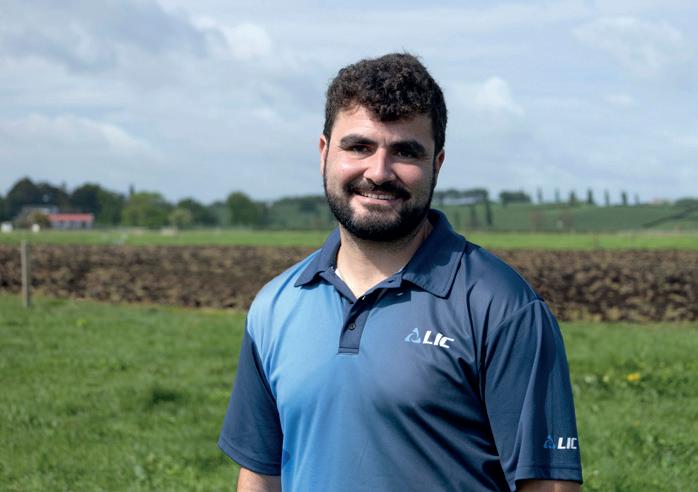
Simpson
Livestock Improvement Corporation is pleased to announce the appointment of James Simpson as General Manager for Europe.
“The introduction of Intellectual Property protection in 2017/2018 which polarised the industry at the time is something I’m most proud of. It was very tough at the time, but imperative for LIC to be able to continue to invest in herd improvement on farm in Ireland.”
He goes on to say that those most opposed to this move have now followed suit and done the same. On the back of this, LIC Ireland established LIC’s only breeding programme outside of NZ, another big achievement.
“This programme uses LIC bred Irish cows and NZ bulls to create sons strong on both gEBI and gBW. What has also been hugely rewarding is the development of the team over that time with the tremendous progress made by David Power and Eoin Kennedy, who is set to step up and advance LIC’s growth strategy for Ireland.
“Angela has supported LIC Europe for the past 14 years and has been the unsung hero behind the scenes in many cases. Offshore subsidiaries take a lot of effort to run, and Angela has helped build the foundation for success.
“In recent years, she became more involved with delivering our strategy in market. Her support of our emerging market in France and the strong relationship with Thierry Lamanda of
Progenes, has helped cultivate a real success story .
“David will be missed by LIC Ireland and Eurogene for the massive contribution he makes, but most of all by his farmers who have relied on his advice and direction for the development of their herds. He will remain connected with Ireland and will support the progress of those stepping into the role.
“With James Simpson now in place as the new GM for Europe, Angela will continue to support the team until her successor transitions into the role.
“Eoin Kennedy, who’s shown he has a bright future with both his business acumen and in-depth understanding of what makes LIC’s genetics special, steps into a modified role, taking on some of David’s areas and leading our presence on the ground.
“At the time of writing, we’re in the process of recruiting a great new team member to support Eoin at LIC Ireland. Mairead - our longest serving representative in Ireland - will continue in her role, delivering the same exceptional value she has brought to the business for more than 17 years.”
A final comment from Mark, “Seeing our genetics at work across dairy herds in Ireland has been hugely rewarding, especially as the resulting cows are ranking exceptionally well on local indexes”.
James brings extensive experience in dairy genetics having worked with Genus ABS for 30 years, most recently as Business Process Improvement Manager for Europe, the Middle East and Africa.
During his tenure at Genus ABS, James led a number of retail and distribution markets in Europe, Great Britain, North Africa and Asia.
LIC GM International, Paul Dunbar says: “The wealth of expertise James brings to our team is invaluable as we continue to grow our presence in Europe and deliver the premium genetics and solutions we are renowned for globally.”

James started in his role on 5 May 2025 and will be based in the UK, working closely with LIC’s UK and Irish partners, Cogent Breeding Services and Eurogene AI Services respectively, as well as LIC’s continental European distributors.
2025 is shaping up to be a promising year for Irish dairy farmers. The weather has been excellent, for the first half of the year, leading to excellent grass growth and well-performing cows.
Farmers say milk production costs have been low this year, with prices remaining strong as well. It’s also encouraging to see the beef industry getting a share of the spoils, with prices holding up well.
A lot can change quickly, but the mood in farming this year is positive - a stark contrast from 12 months ago. It’s easy to get complacent and coast through to the end of the year, but now is the time for farmers to look closely at their systems and see where they can make improvements. Herd improvement should be at the top of that list.
It could be argued that the financial difference between your best and worstperforming cows can be seen more clearly in a good year like this one. Powerful data is available to farmers around individual cow performance within the herd through ICBF reports.
Many of our customers manage herds that include both LIC and Irish genetics. In recent months, LIC has conducted indepth analysis to identify which cows are performing best. Throughout this issue of GrassRoots, we’ll be showcasing realworld examples of these herds.
Cows with LIC genetics in their background are consistently proving to be the top performers in herds across Ireland.
Farmers who have used LIC genetics for years recognise the value of the cows they’re milking and how well they fit into their systems. However, recent analysis has raised the question: what gives LIC genetics the edge? There are many contributing factors, but a few key ones include: Scale plays a part. There are 4.7 million dairy cows in New Zealand and 3 out of every 4 cows are bred by LIC genetics. A large cow population allows for more reference data which leads to more accurate evaluations.
Breeding direction is hugely important. For LIC it’s all about efficiency. To breed for the most efficient

cows we must breed for the right traits. Breeding Worth (BW) places downward pressure on the liveweight of cows and therefore breeds cows with moderate liveweight. New Zealand has also been breeding for cows with high protein and fat percentages a lot longer than Ireland has.
TOP (Traits other than production) scoring of cows gives far greater accuracy around traits such as udders, feet and legs, and capacity. Carrying out independent TOP inspections on the dams and daughters of AI bulls in New Zealand requires significant investment from LIC.
ET (Embryo transfer) work is carried out extensively by LIC to ensure that cows and heifers identified with elite genetics can have more than one offspring in a given year. Over 3000 embryos are facilitated by LIC to be created as part of our breeding programme per annum. ET generated bulls make up over 40% of bull intakes each year.
In addition, more than 5000 cows across New Zealand are contract mated by LIC each season.
Crossbred genetics is the cornerstone of what LIC has to offer. Over 60% of the NZ national herd is now Holstein Friesian X Jersey crossbred. Farmers were keen to take advantage of profitability gains from hybrid vigour and to create a ‘medium’ sized robust cow that many felt was ideally suited to their farming system.
Jersey and KiwiCross® genetics are delivering strong results for Irish farmers, and this issue features several farmer stories that showcase their success.
Table 1: Fertility Breeding Value


Fertility: New Zealand nationally has improved their 6 week in-calf rate (6WICR) by almost 4% in 2 years. Table 1 shows the relationship between 6WICR and the fertility BV in BW. This shows that LIC is not taking its eye off the ball on fertility.
Much of this gets lost in Ireland, as LIC bulls are selected based on BW, and their genetic potential can get misrepresented when converted to EBI. Our advice: base your decisions on real-world performance – what’s happening on the ground with LIC bred cows. This performance is most clearly demonstrated in co-op performance reports from long-standing LIC users.
The co-op performance report shown above speaks volumes. It represents the standard every farmer should aim for with their herd. If you’re not there yet, get in touch. Now is the perfect time to start planning.
Although LIC is perhaps better known in Ireland for elite Jersey and KiwiCross® genetics, its New Zealand Holstein Friesian offering has also been incredibly strong for many years. A number of herds in Ireland have been running profitable, resilient systems using LIC Holstein Friesians as part of their breeding strategy.
In the early years, when the EBI was first introduced, Irish farmers began shifting their breeding focus away from production alone, aiming instead for a more durable, fertile cow suited to a grazing system.
An influx of New Zealand genetics with Holstein Friesian bulls such as Dano (HZO) and Hugo (UYC), helped Irish farmers accelerate their shift in this direction. These bulls were transformative for farmers looking to breed cows with moderate stature, bringing power and desired body shape, boosting fertility and producing high protein and fat percentages.
The same focused approach to breeding those Holstein Friesian bulls has remained for the past few decades. This has resulted in the Holstein Friesian breed in New Zealand being in a stronger position than ever before. The bulls available in
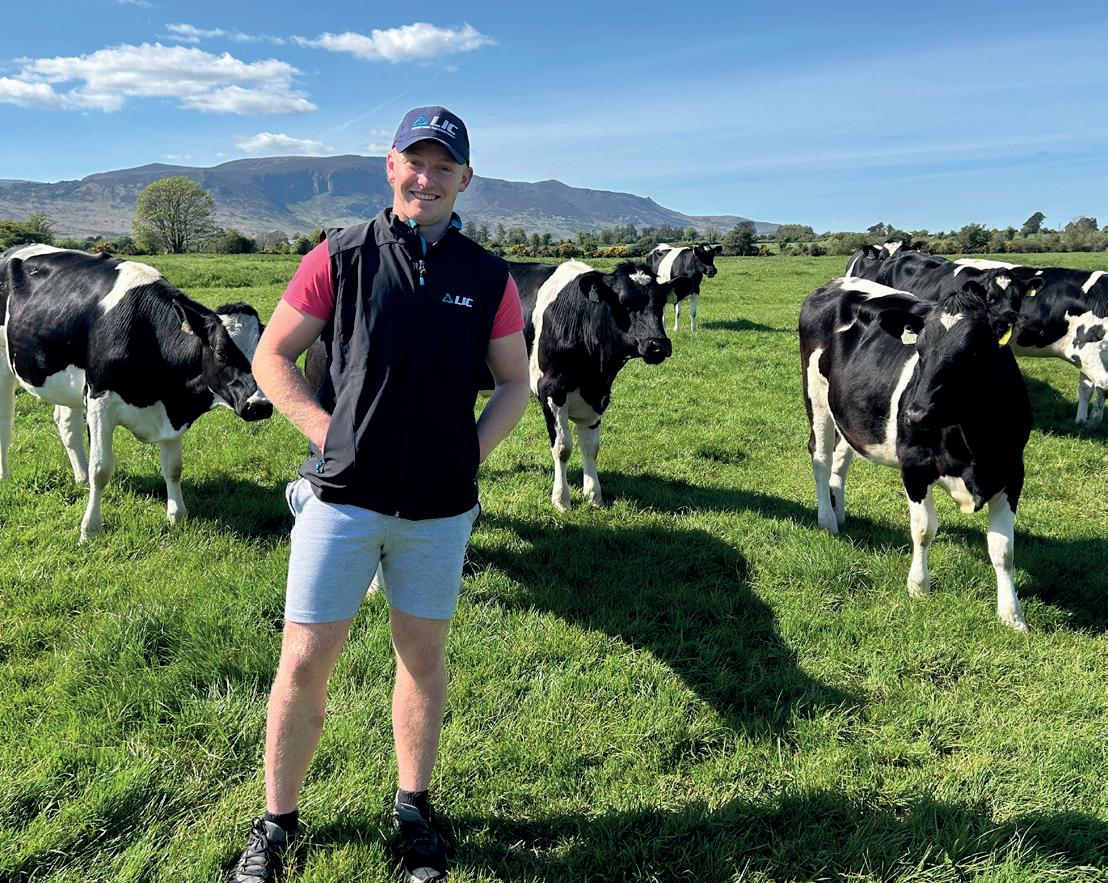
today’s offering can still pack the same punch that the early influx of bulls did when New Zealand genetics were first used in Ireland.
Recently, we’ve been fortunate to offer farmers access to the very best F16 bulls, all available in sexed semen. There’s no difference between the genetics offered in New Zealand and those available to Irish farmers.
But why choose these bulls over the high EBI Holstein genetics available in Ireland? William Walsh, a member of the LIC Ireland/Eurogene team believes there are a number of beneficial reasons.
William started in his role as breeding advisor with LIC in early 2024. The Waterford man is passionate about helping farmers achieve their breeding goals and believes that the New Zealand
strain of Holstein Friesian has a lot to offer in Ireland.
“I think the New Zealand Holstein Friesian has moved into a different league recently and offers something that isn’t available elsewhere,” he says.
“You can get bulls with huge percentages. At a minimum, bulls with back-toback generations of 9% solids in their 3-generation pedigree with no trade-off in production. Just as the KiwiCross bulls are on the point of breaching the 11% solids barrier, we now have black and white bulls such as Meander Spyro Accord (FR2508) and Mattajude Spyro Thorn- ET (FR2513) that are surpassing 10% solids.
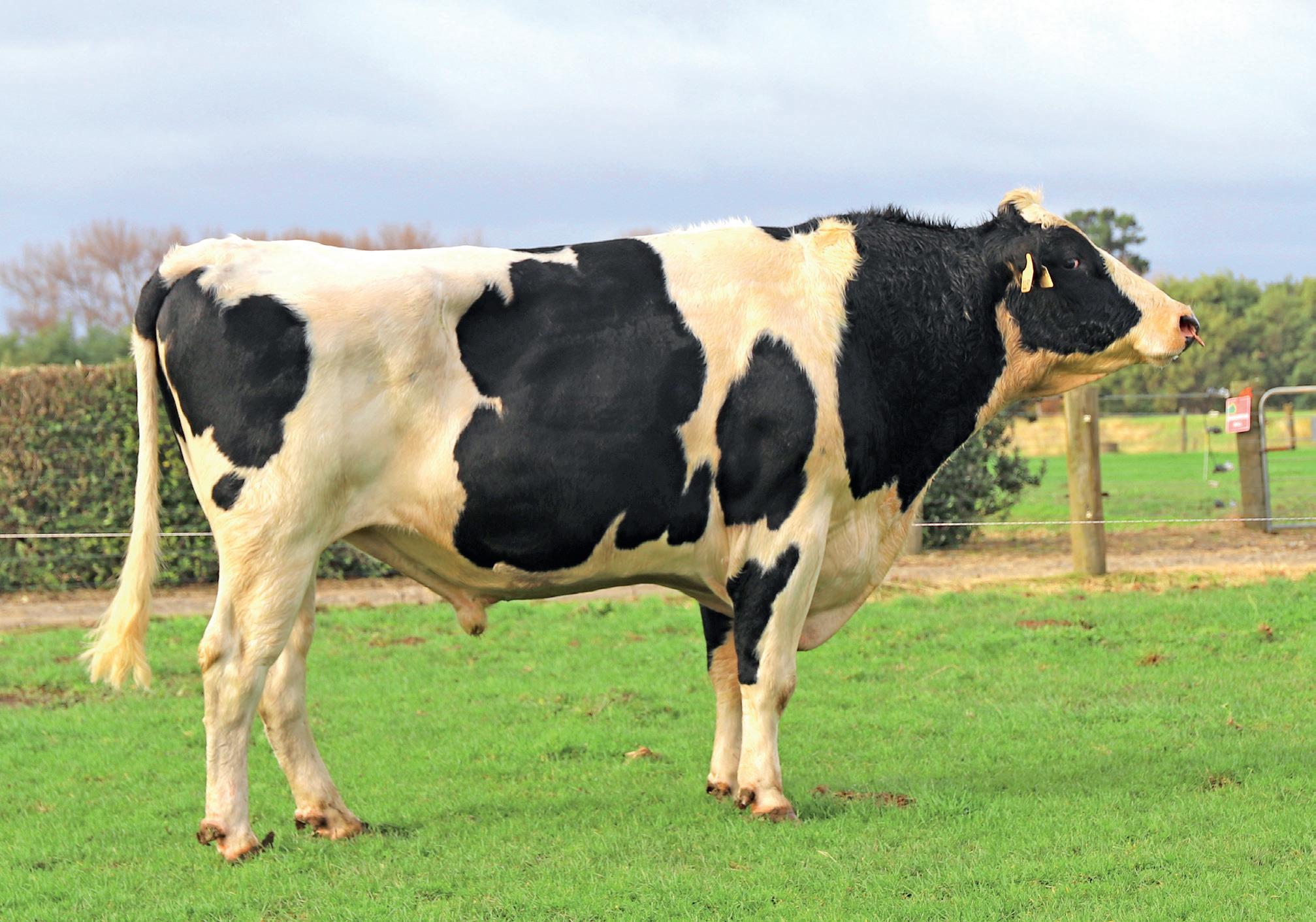
“Just look at the cow families that we are breeding these bulls from. Accord’s dam, a Galant sired cow, produced 700kg milk solids in her 3rd lactation at 5.6% fat and 4.4% protein on 750kg meal of concentrate supplementation. Similarly, Spyro Thorn’s dam produced 520kg solids at 4.97% fat and 4.3% protein. The gBVs that these bulls have for producing high solids and percentages are all thanks to elite genetics.”

The aligned and consistent focus to breed animals capable of producing such high component milk is LIC’s most unique selling point in the Holstein Friesian breed, but as Walsh points out, LIC also bring in bulls that can suit higher production systems.
“There are also bulls such as Equator, Darius and Bakerboy who can outproduce a lot of the local Irish bulls. Since Equator has entered Ireland his EBI has risen by €120, Darius and Bakerboy are
going to follow a similar trend once their progeny start to milk,” says William.
“These bulls have a milk BV of +1000 which I always tell my customers equates to about +200 of a PTA for milk kg in the EBI. These bulls can fit perfectly in any herd breeding programme, whether it’s to use in a crossbred herd looking to boost kilograms of milk but not overly alter size or physical attributes of the cows, or whether it’s a black and white herd wanting slightly higher output cows but wishing to breed more strength and power.”
Milk production isn’t the only thing that makes a cow work in Ireland. An appropriate liveweight and body shape is of huge importance also. This is where the New Zealand Holstein Friesian and LIC’s breeding programme stands out the most.
“I think the fact that all bulls coming from NZ have TOP (Traits Other than Production) scoring data behind them gives greater consistency and uniformity with the type of cow you are going to end up with on the ground. You can see this most in your young stock every year,” continues William.
“I would be encouraging my farmer clients to avoid breeding leggy, frail type cows and to place a lot of emphasis on breeding body depth and width to generate cows with strength and power.
“Capacity is massively important to get cows to achieve high grass intakes and produce high kilograms of milk solids. It’s highly heritable, and can be improved very easily through genetics, but only if it is being measured and looked at in a serious way.
“Tronnoco SG Severyn (FR2512) is a perfect example of a bull that has impressive capacity. Even on the Irish index he’s +4 for chest width and over +2 for body depth which really is unheard of for a black and white bull boasting his production figures.”

Irish farmers have shown preference in the past for using daughter-proven New Zealand bulls. However, recently LIC has been bringing in more young genomic bulls. New Zealand farmers have now moved to over 60% genomic inseminations, reflecting the strong confidence in the technology. Significant investment has been made in genomics by LIC to reach the point where these young bulls are performing well and maintaining their elite status as their daughters begin milking in herds. William feels that Irish farmers shouldn’t miss out.
“I know that Irish farmers like the fact we can bring over bulls with daughter proofs, as it gives them assurance that they will be happy with their results. I think we will still provide this option, but I’d still be encouraging anyone who has seen the merits of using New Zealand Holstein Friesian genetics that it is worth considering using these genomic bulls.
“The calibre of the new bulls we brought in for 2025 was exceptional. They even came in with very high EBI’s which was extremely pleasing to see. These bulls offer us more choice and I’m looking forward to seeing

how they perform for our farmers.”
The bull team table in the catalogue shows an Irish farmer could achieve BVs of 100kg solids, 550-560kg LW cows, at 5.5% fat and 4.3% protein with the right breeding plan.
All the staff at LIC Ireland share William’s passion for New Zealand Holstein Friesian genetics and can help you develop a tailored breeding plan for your herd. One approach William often recommends to customers new to LIC genetics is to sample a selection of bulls first.
“I think it’s a great approach to use half NZ Holstein Friesian and see how they perform in comparison to other stock in the herd for a year or two. I have no doubt that once they start milking those cows, their confidence in going down that direction will increase.”


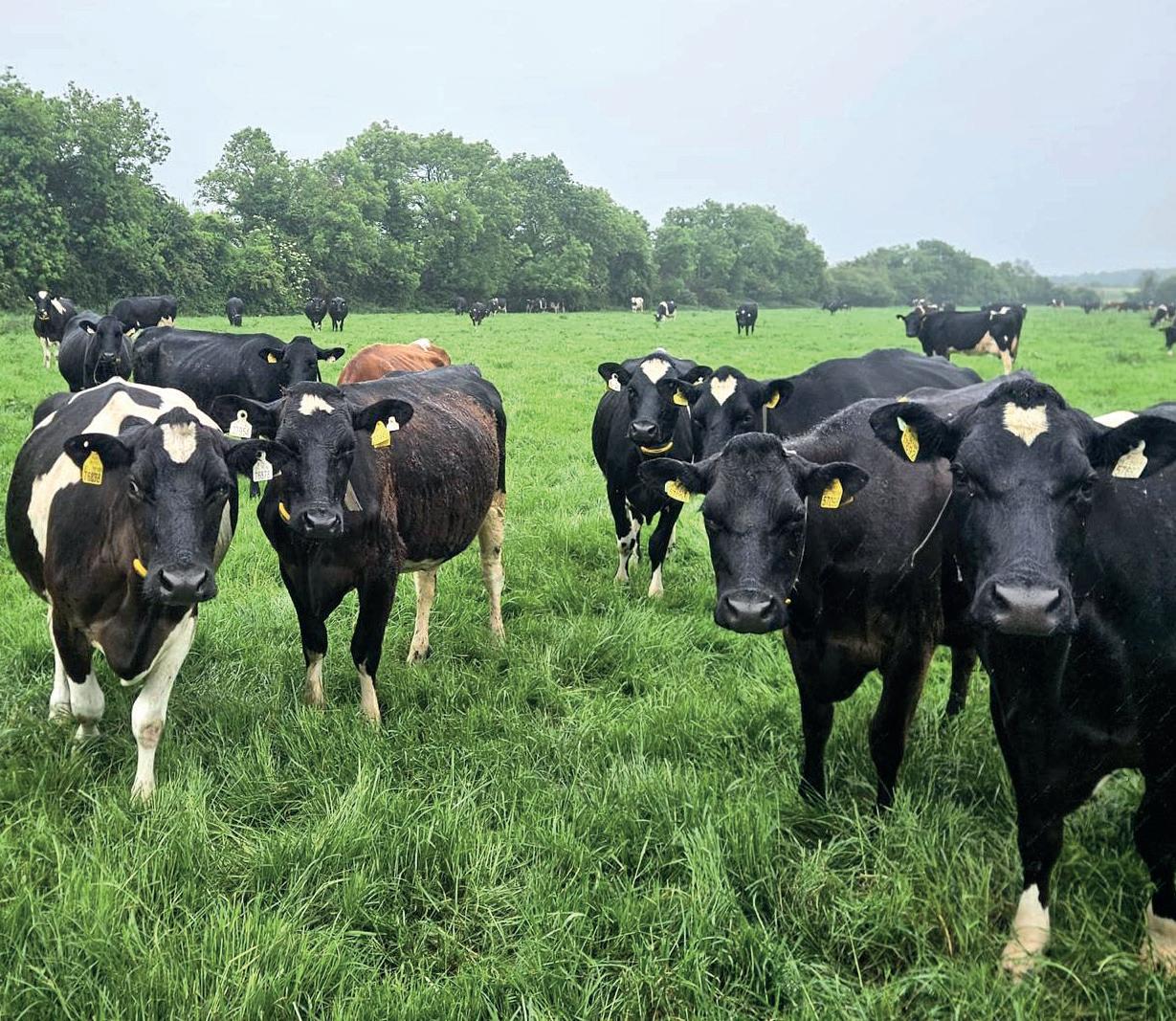
In Ireland, there’s ongoing debate about which type of cow best suits Irish farmers in achieving their farming goals.
It can be a matter of preference, tradition or dependent on external influences. For LIC, it’s simple. To capitalise on our greatest natural advantage—growing and utilising grass—we need a cow well-suited to that purpose in both Ireland and New Zealand.
The ideal cow for Irish grazing systems needs to efficiently deliver a high amount of milk solids per kilogram of liveweight, with very little fuss, while quickly getting back in calf each year. Breeding Worth (BW) has been designed to create such a cow.
Similarly, Ireland’s Economic Breeding Index (EBI) was developed with a comparable objective. While there are differences between the two indexes, the EBI’s objective is to breed a cow suitable for the Irish grazing system similar to BW. In theory, the EBI and BW indexes should be closely aligned. A bull that ranks highly on BW should also perform well under EBI. Frustratingly, we see LIC bulls coming into Ireland, year after year, not achieving the EBI rankings their New Zealand data suggests they should, due to differences in how the data is handled.
The suitability of LIC genetics for Irish farmers is demonstrated annually by the performance of LIC-bred daughters in Irish herds across the country. As these daughters of LIC bulls complete more lactations and additional data becomes available, their EBI ranking
tends to rise. This has been evidenced in co-op performance reports of longstanding LIC customers.
They will show one star for EBI of the bulls used across their herds, whereas the farmers themselves are generally breeding five-star EBI herds. Most understand and accept that this is how it is. However, if such animals are not achieving a high EBI until proven in later lactations, farmers can easily be swayed away from using LIC genetics. At the very least, it will result in indecision.
In recent months, LIC Ireland staff have been actively engaging with farmers to highlight the benefits of using LIC genetics. This has taken place through what we call cross-share events – where members of the LIC team visit individual farms to speak directly with farmers.
The host farmer can then invite other farmers – such as neighbours, or members of discussion groups to join the day. The event focuses on the farm’s performance and discusses future plans for genetic improvement. The conversation is always engaging, with a two-way flow of information between LIC staff and farmers.
Topics of conversation have been around basing our decision making on what makes the farm more profitable, easier to run and repeatable year-afteryear. Genetics plays a significant role in achieving these goals, and the LIC team highlights this using real on-farm data.
Holding these meetings on farm is a crucial element, as it allows both farmers and LIC staff to see the cows firsthand and sense the type of genetics in the herd. Cows are visually inspected, with LIC bred stock consistently standing out for traits such as capacity, udders, feet and stature. These traits are essential for robustness and suitability for grazing, yet they often get overlooked.
To evaluate how LIC bred cows were performing compared to their peers within the same herd, LIC staff conducted comparison work. Cows were grouped by lactation, and within each group, cows were evaluated based on two main criteria:
1) Whether or not the cows had NZ genetics in their pedigree
2) The breed split of the cows (ie. percentage of Jersey).
The beauty of this work was that farmers could clearly see where the information came from and how the data was presented on the day through handouts, making the process very transparent.
LIC’s Padraic Harnan led much of the comparison work by compiling data and generating daily reports for herds of varying sizes.
Many of the herds included cows with both LIC and Irish genetics across all lactations. This provided strong sample populations for fair and meaningful comparisons. However, the data also revealed inconsistencies in some of the breeding decisions. This insight became a key driver for us to provide farmers with better information, enabling more informed decisions going forward.
Table 1 shows the results from one of the herds included in the comparison work - Joe Leonard farm in Co. Meath. Each group demonstrated that the further the genetics moved away from New Zealand lines, the less efficient the cows became. Likewise, the proportion of Jersey genetics had a significant impact on efficiency, particularly in terms of kilograms of milk solids per kilogram
of liveweight. This trend was consistent across nearly all farms involved in the cross-share events over the past year.
This comparison work is especially valuable because all cows are under the same management and treated exactly the same within the herd. This allows us to accurately determine what cohort of cows are performing best for an individual farmer. 1st

Comparing herds from two different farmers doesn’t provide a like-forlike comparison, whereas this approach offers a fair opportunity to assess both LIC and non-LIC bred cows under the same conditions.
The feedback from our crossshare events was extremely positive. For some farmers, it validated their current choices and gave them greater confidence to continue using LIC genetics. For others it made them realise that their current strategy wasn’t working for them and they needed to reassess their approach.
From an LIC perspective, the information farmers shared with us about what they would like to see from LIC going forward was enlightening. Ultimately, LIC’s goal is to help farmers improve their herds, increase on-farm profitability, and enhance work-life balance. The crossshare events provided valuable insights into how we can deliver even more meaningful support to our customers.
We plan to continue these cross-share events over the next twelve months. If you’re interested in having LIC personnel visit your farm to help host a cross-share, please use the contact details on the back of this publication to get in touch with a team memberwe’d be happy to assist you in organising one.
David Melody from Co. Clare says he’s been lucky to work with different cow types throughout his farm management career, giving him clarity on what cow best suits his farming style.
Now in his sixth season managing the 350-cow dairy herd at Beechgrove Farm in Kilkenny, David oversees operations on the Phelan family farm, conveniently situated just off the motorway.
The Phelan’s provide great support to David by rearing all youngstock and handling some of the machinery work, such as fertiliser application and reseeding. David has full autonomy over the dairy enterprise, including grass management, staffing, and all breeding decisions.
Consistently performing to a high standard, David was recently recognised when he was awarded the 2024 Young Farm Manager of the year. In addition to himself, the farm employs one other full-time staff member, and during the spring, relief milkers and part-time workers support the operation - including a student from UCC.
The farm has excellent facilities for managing the large herd. A state-of-theart 350 cow cubicle shed with ample slurry storage is situated adjacent to the 30-unit milking parlour. Roadways, fencing and water in the paddocks are all well set up. This all contributes to David being able to keep his focus on what matters.
Simplicity and attention to detail are key for the Co. Clare man. “To run a simple system, you must be very clear on what you prioritise. For this farm, it’s grass and cows and making sure everything is streamlined so we can focus our attention where it matters most.”
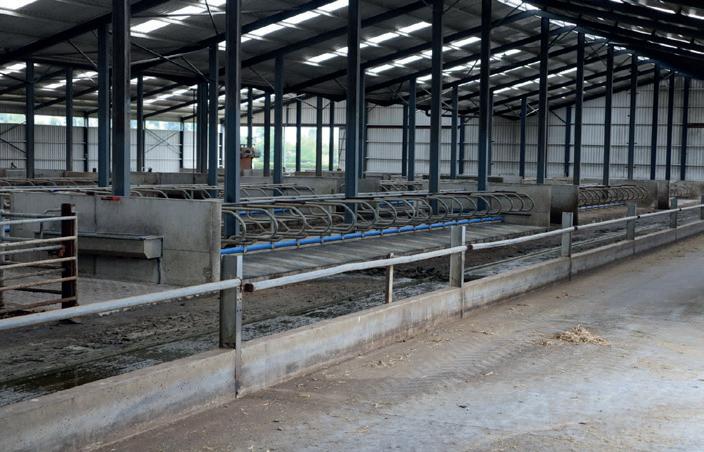
David is consistently achieving very high milk solids production from the herd. So far in 2025, the cows seem to be at a level of production the farm hasn’t seen before. The cows peaked at 2.65 kg milk solids per day in April which came from 32 litres of milk at 4.8% fat and over 3.7% protein. David thinks that he can continue this for the rest of the year with the right management.



“Last year, we produced 525 kg milk solids. While that was obviously very good, we’re still aiming to gradually increase that to 575 kg milk solids. I believe the herd has a good chance of achieving this in 2025, if we keep going the way it is and keep the right grass in front of them.”
When it comes to his breeding decisions, David has learned that the crossbred cow suits the way he wants to farm. He adds, “The 60% Friesian, 40% Jersey animal is what works best on a farm of this scale trying to do high kg milk solids from grass. They’re a nice handy sized cow but can still generate the volume of milk needed to produce high kg milk solids. They are a seriously robust animal, and we find them extremely easy to manage as they’re also very docile.”
But production is only part of the story. David needs his system to be repeatable year after year. The New Zealand cow works well in his system for a variety of reasons.
David explains, “I want cows with big capacity to consume plenty of grazed grass. We target to feed less than a tonne of concentrate depending on weather. In 2024 we fed 950 kg of concentrates in what was a very challenging year for weather.
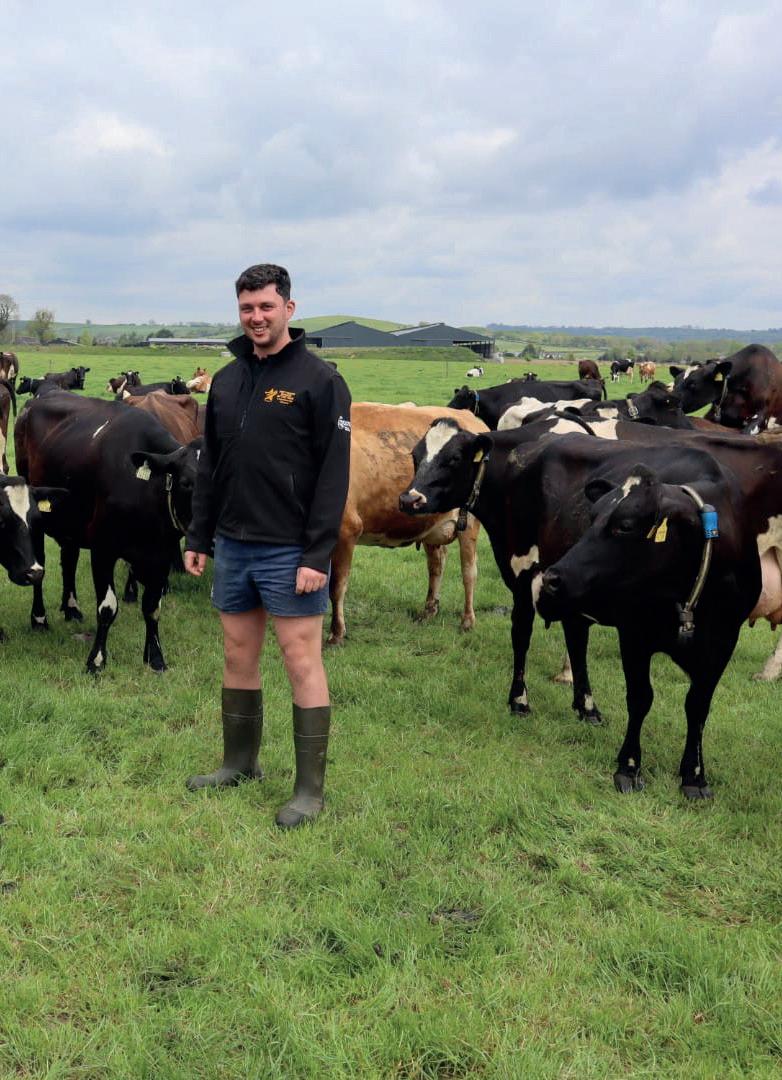
1
0
3-12.5
0
3-12.5
0
3-12.5
“We expect to feed a lot less this year with how the start of the year has panned out for 2025. We grow about 15t/DM grass each year, so our priority is to get that into the cows and import as little feed as possible.”
While David’s excellent management skills are crucial, it’s the herd’s genetics that truly enable its performance. Each year, David focuses on selecting the right genetics for his herd - something he considers a top priority.
“LIC visited the farm last summer and held a cross-share event, where they analysed the herd to see what cows were performing best. Over the years, different genetics have been introduced by different managers running the farm.
David remarks, “I already had confidence that LIC genetics were delivering what I wanted on the ground. But to have the evidence from that comparison work to back that up, really gave me more confidence.”
As shown in Table 1, cows with a higher proportion of New Zealand genetics and more than 40% Jersey influence outperformed other groups in the herd. Across all lactations,
they produced more kilograms of milk solids per kilogram of liveweight. These findings align with similar analyses LIC has conducted on other herds.
“It’s nice to have your own farm data used to validate your decisions on what you’re doing every day. I’m managing the cows here for the full year and want to make sure I’m milking cows that I enjoy milking, he adds.”
David’s breeding strategy with the cows involves the extensive use of sexed semen to get his replacement heifers and then high CBV beef sires on the rest of his cows and repeats. The replacement heifers all get one serve of conventional NZ Holstein Friesian dairy semen and then a bull is used to clean up the rest. This year 130 sexed straws were used on the cows and 80 conventional straws were used on the heifers.
“We are seeing that by carefully selecting the right beef sires, we are generating high quality beef calves to sell from the herd each spring. Sexed semen is not compromising on our calving spread as we achieved 92% six-week calving rate this year.
“We do place an emphasis on calving ease and short gestation length on our beef bulls but think we can chase higher quality calves with better carcass traits along with this with careful selection.”
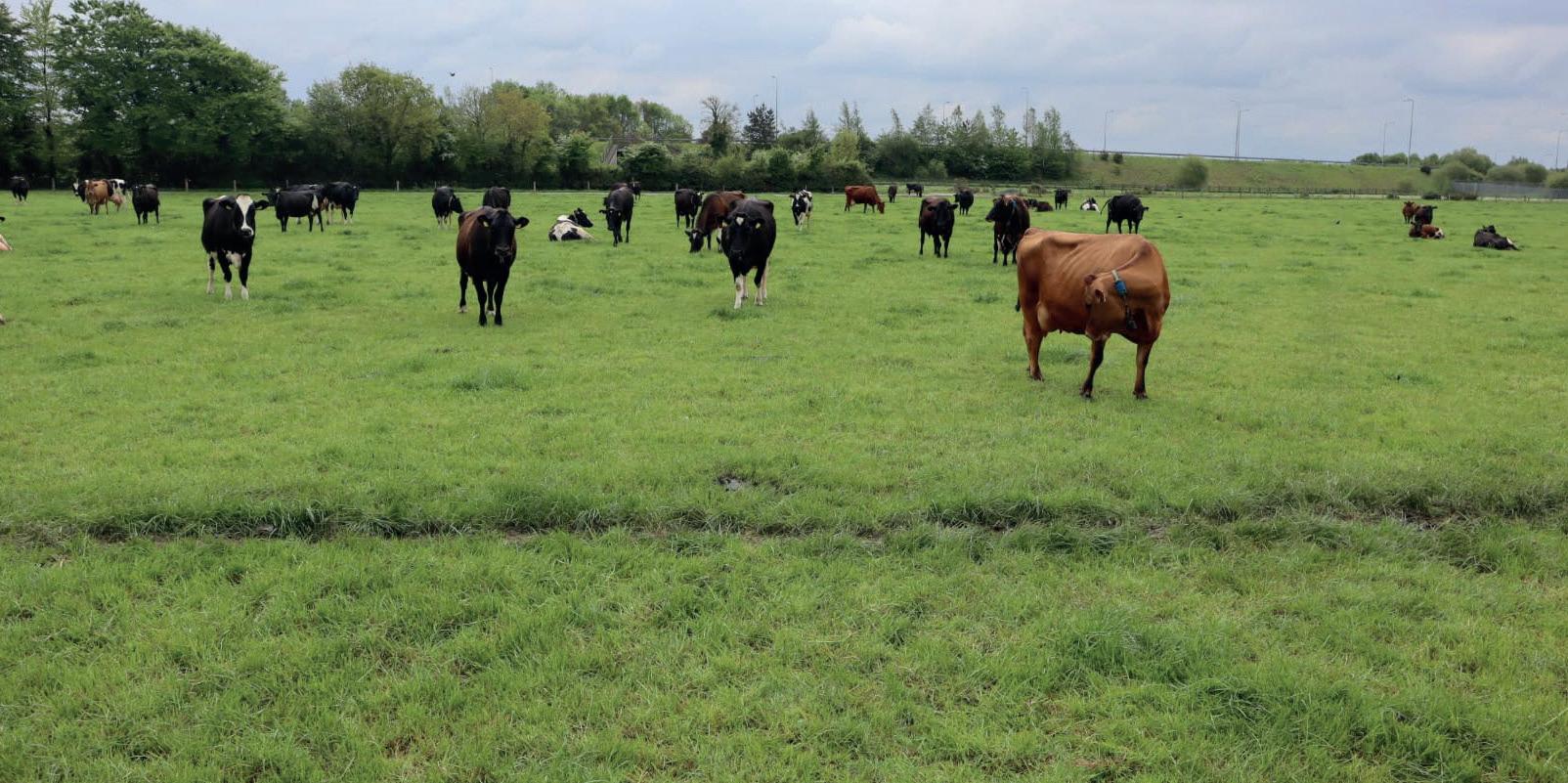
Going forward, David wants to fine tune the dairy enterprise to become as efficient as possible. He believes there’s more to get out of the cows, both through management and genetics. However, he stresses that any boost in performance cannot come at the expense of making the farm more complicated or harder to run.
Work-life balance is key, if we’re not enjoying it, then why are we doing it at all?”
Earlier this year, Teagasc Moorepark confirmed the launch of a new chapter in the ongoing project: Next Generation Herd II. Researchers Brian McCarthy and Frank Buckley will lead the system trial study.
Established in 2013, the Next Generation Herd (NGH) is a research herd offering a futuristic view of the phenotypic performance of dairy cows selected for exceptionally high genetic merit, based on Ireland’s dairy breeding strategy - the Economic Breeding Index (EBI).
Since the initial experiment, the expansion of the national herd following the removal of the European Union milk quota, combined with the effects of climate change, has led to multi-factorial sustainability challenges for the Irish dairy industry.
These include increased enteric methane emissions, stagnant/declining water

quality, and oversupply of low-value male dairy calves. Consequently, ongoing evaluation of breeding goals and strategies (e.g the EBI) is prudent to validate the direction of genetic gain.
The Next Generation Herd II experiment 2025-2029, will place renewed emphasis on the impact of organic nitrogen (N) and stocking rate on farm productivity, profitability, and environmental performance.
This focus is driven by recent changes to the Nitrates directive and newly imposed limits on nitrogen fertiliser use. The revised whole-farm system research study (NGH II), which includes progeny performance, will evaluate three contrasting dairy cow genotypes. Each genotype group will consist of 66 cows:
• National Average - current national average Holstein Friesian (HF) based on EBI
• Elite - current top 5% HF based on EBI
• Elite Jersey x HF (JEX and FRX)current top 5% JEX based on EBI
The genotypes will be compared across three contrasting pasture-based systems, differing in milking platform organic N stocking rates of:
• 170 kg organic N/ha (whole farm – all area available as milking platform)
• 220 kg organic N/ha (whole farm – all area available as milking platform)
• 270 kg organic N/ha (milking platform - the whole farm organic N stocking rate will be 220 kg N/ha by utilising an out-block equating to 19% of total farm area)
The EBI, sub-indices and PTA values for National Average, Elite and JEX cows within the Next Generation Herd II are presented in Table 1.
Cows and in-calf heifers from within Teagasc and commercial herds across the country were identified and sourced in late 2024 and early 2025 and incorporated into the Next Generation Herd at Dairygold Research Farm.
A strict disease screening and biosecurity protocol was implemented to ensure a disease-free status and mitigate the
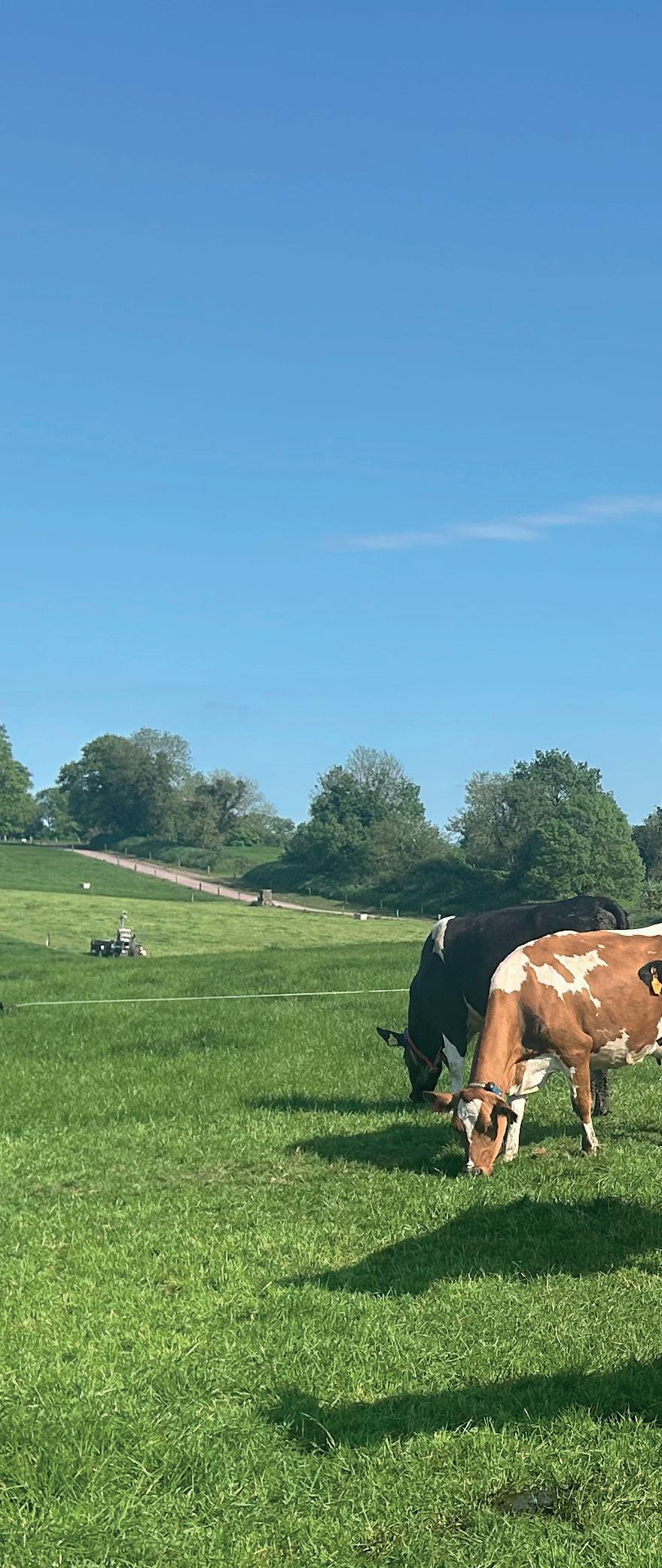
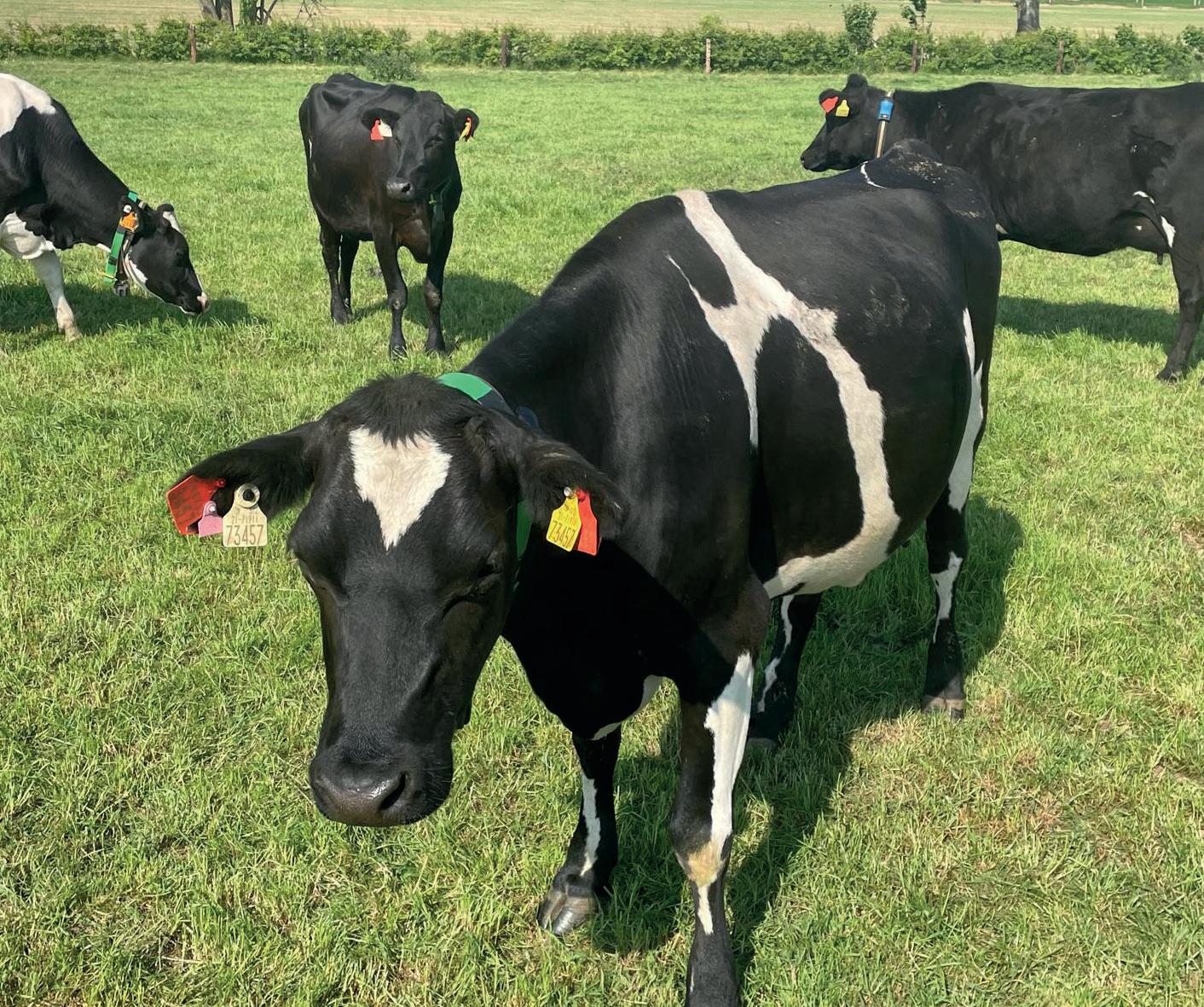
disease-risk associated with assembling cows from multiple herds. For 2025, the herd will comprise of 59% 1st lactation, 27% 2nd lactation and 14% 3rd lactation cows. The objective of the study is to validate the breeding strategy and investigate the economic and environmental efficiency of the genotypes and production systems.
The trial will take a whole-system view. Beef progeny from each genotype will be followed through to slaughter. Detailed production, and environmental measurements (in particular enteric methane and nitrate leaching) will be taken from the genotypes and the systems.
A strict mating strategy will be implemented to optimise the use of dairy sexed semen for the replacement generation and high-merit beef semen to enhance the value of non-replacement dairy progeny. This approach aims to maximise the overall calf crop value from dairy cows of contrasting genetic backgrounds.
This will enable the investigation of interactions between dairy cow genotype and beef sire genotype on progeny slaughter characteristics. LIC are delighted to be involved in supplying sexed semen for the Elite Jersey x HF genotype cohort in the study and will watch the results of the trial closely.

This work will contribute to a forwardlooking blueprint for sustainable milk production. In previous trials conducted by Teagasc, where the performance of different genotypes was evaluated, the Jersey x Holstein Friesian crossbred consistently demonstrated impressive performance and emerged as the most efficient cow for the Irish grass-based system.
The study seeks to strengthen farmer confidence in their breeding decisions. LIC fully supports the great work Teagasc researchers are doing to improve the economic and environmental sustainability of the Irish dairy industry.


High solids, excellent fertility, robust cows, and efficient grazers – these are the qualities that Martin Kinane, a farmer from Tipperary says the New Zealand Holstein Friesians have brought to his farm.
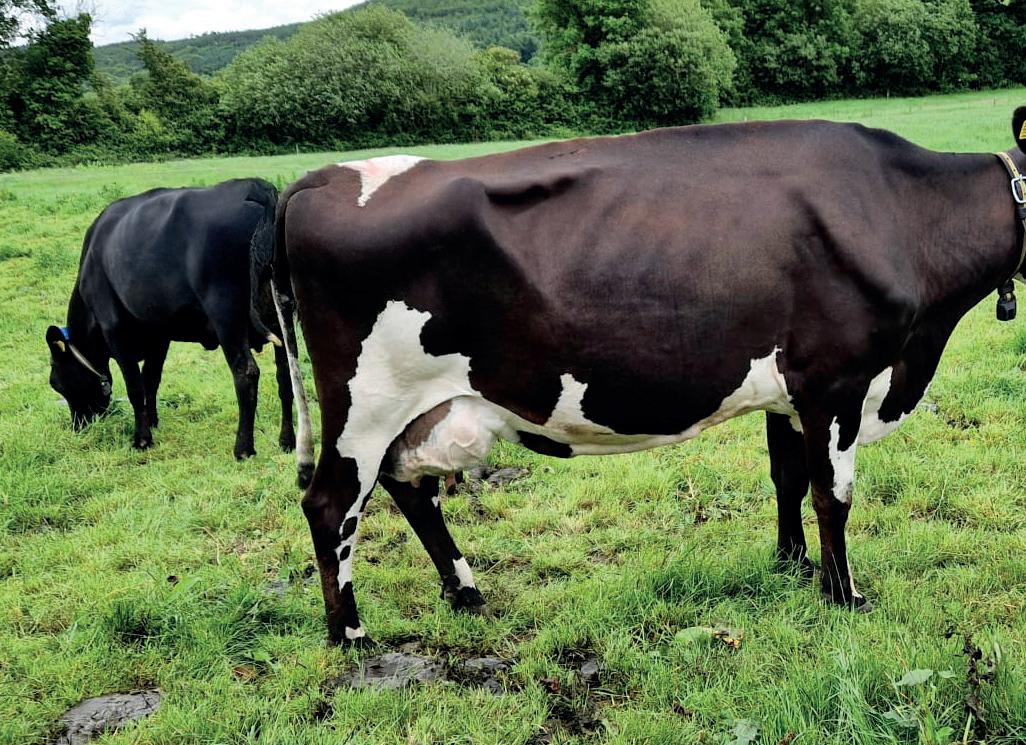
Running an average of 50 milkers on his 35-hectare all-grass farm at Gortnacare Farm, on the outskirts of Tipperary town, Martin has remained loyal to these genetics since the early 1990s, adding that his interest in NZ Holstein Friesians began when he noticed how well a single New Zealand bred cow, among his herd of Holsteins, was performing.
“I started to investigate more and found that these cows performed very consistently and were long-lived. They produced great returns from grass, and I believed they would be well-suited to Irish grazing conditions.
“Back in those days I was limited by choice. One of the first bulls I used was Seaway Forever and it didn’t take long before I was noticing big improvements in my herd. I did use one Jersey bull at the time too, but now I concentrate on the Friesians to avoid any issues with the bull calves that get sold through the local market.”
Martin recalls how fortunate he was all those years ago when he purchased five cows - the only additions to his herd - and discovered they were granddaughters of the top NZ Friesian at the time. “They were also great performers. Their breeding was a complete fluke.”
He says Holsteins were “on the rise” in the early 90’s, but he could see where the breed was going. “They were big animals, not really suited to my system. Since farmers were working with quotas, they feared using high butterfat bulls because this reduced their volume. I was convinced they were wrong and went completely the opposite direction.”
On the surface, Martin notes that his stocking rate isn’t particularly high, with 20 hectares of grazing land supporting his 50 cows and youngstock. “But the farm is fragmented. We have a local road dividing the land in two, so we have to manage two rotations, one day and one night, which doesn’t make it easy.
“I am also aware that our grass quality is not as good as it could be. But watching the production figures from my neighbours, I do very well compared to them. And I’m certain that’s all down to my New Zealand genetics. Grass yields are about 14 tonnes/ha but it’s not for a lack of quantity, it’s the lack of quality.

“I don’t test the silage because it is so varied, and I wouldn’t get an accurate enough figure. I allow for 10 large bales per cow, fed when the milkers are dried off, and this is supplemented with a 14% protein cake while they are grazing and 16% cake when they are on the silage. Concentrate use is
Calving starts in the second week of February, and all but three cows are calved before the end of March. “We can’t calve earlier because of the fragmented block; it shortens our season a bit as it’s dark in February/March and October. All cows are dried off by mid-November.”
His herd was housed in mid-November this year, after enjoying a good autumn. When snow and rain hit the farm, the decision was made to bring them inside and dry them off after approximately 270 days in milk.
Martin has consistently ranked in the top one per cent for solids production with his local co-operative, Tipperary, for over a decade – a remarkable achievement.
His results on October 1, 2024, showed returns of 5.45% fat and 4.35% protein and for November 1, 2024, they were 5.7% fat and 4.4% protein. These results, including his overall yields, placed him in the top one per cent of Irish herds on EBI ranking.
“I’m usually in that sort of area,” he explains. “I just carry on day-to-day and the results follow, I honestly don’t do anything special. It’s all down to genetics and I definitely have the right cows for what I am trying to accomplish here. I’m happy to just keep on doing what I’m doing.”
He recalls that around the time he began transitioning to New Zealand Holstein Friesians, there was a major national initiative to improve protein performance. There were a lot of cows averaging 3.7% protein from grass and this showed him how important genetics were – his cows were outperforming the national herd, even at this point.
“Genetics are the best investment you can make,” he says.
“I could see a lot of people had static results and I would go to my discussion group and be amazed at the way some people were thinking. At the time there was a big difference between the NZ solids figures and those here – but now I feel I am on a par with New Zealand as I am basically farming the same animals.”
Martin’s average production over the past three years has been 487 kgMS
per lactation from his cows weighing approximately 580 kg each. Looking ahead, he is confident that these figures can continue to increase. In 2024, production dropped to around 475 kgMS due to poor weather. However, overall returns were approximately 10% above the average.
“A few years back they would publish the top EBI herds in the country, and I was always the second highest in that list,” he says. “After a couple of years, I asked them to remove my name as I didn’t want to be involved in a race. People were going for EBI on the bull above anything else, and it wasn’t where I was with my future cow in mind.
“It just didn’t sit well with me. The aim of breeding animals is to look at a wide variety of selection that suits where you are planning to go. As an example, temperament is important to me, so EBI or BW is not good when I’m getting kicked by the cows I’m trying to milk.
“EBI is a good index; it assigns different weightings to the traits of the bulls – but not all of them are relevant for me. I like to look at practical things: good solids, good temperament, good fertility, efficient grass utilisation. I don’t select bulls based on EBI, but I’m very happy with the way I am going. Being in the top 1% for EBI proves I’m getting a lot of things right.
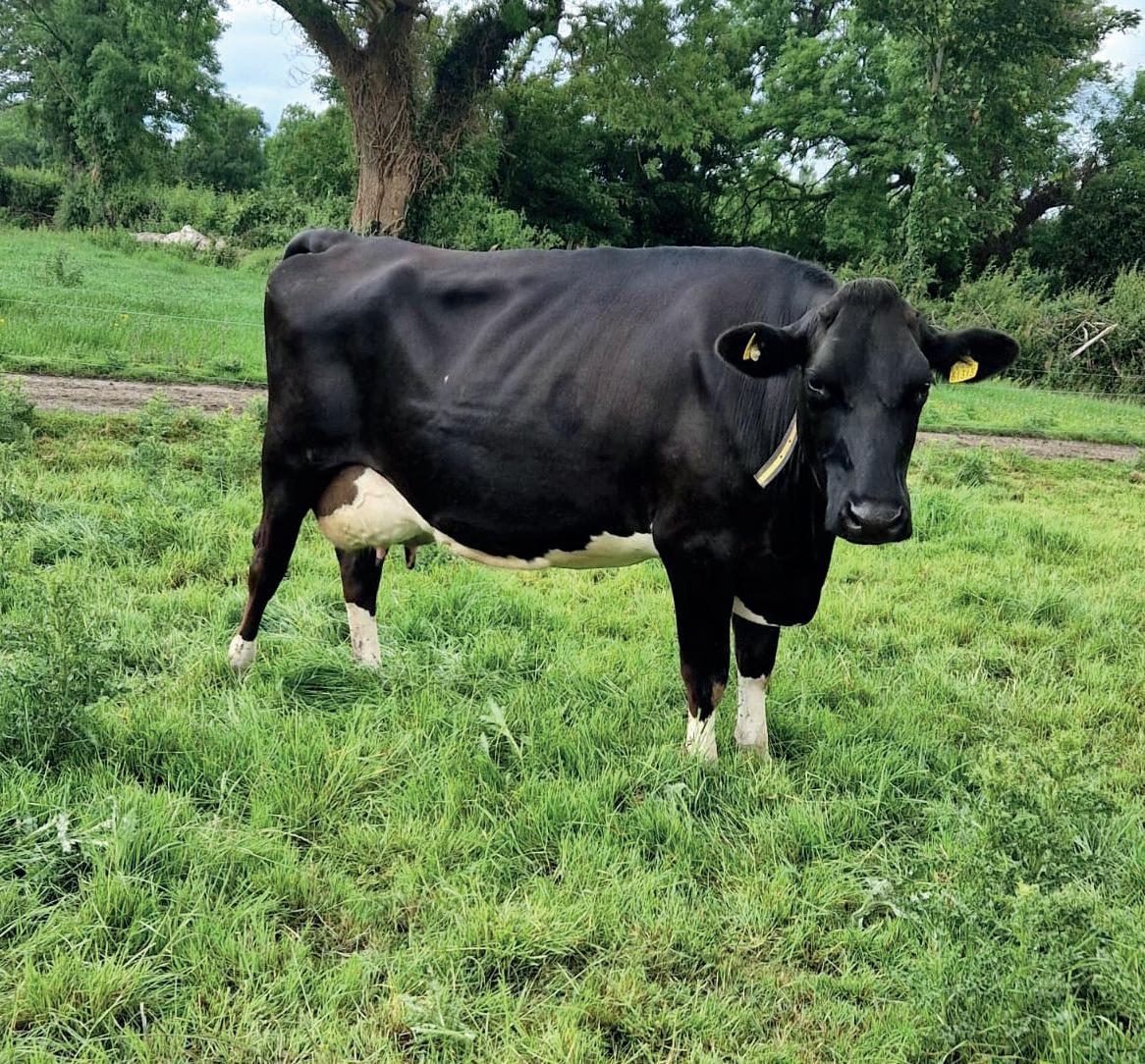

Bull calves can be a challenge for Martin, which is why he chooses New Zealand Holstein Friesians. “I sell the bull calves through my local mart in the spring, and it works well.
Looking ahead, Martin plans to keep things simple and continue on the path he’s chosen. This year he has used Backdrop, Equator and Galant, as well as trying a few different lines on the advice of LIC.
“I’m sure I can go higher with my percentages, but any sudden increase may put the farm under more pressure, and I don’t really want to go that way. I think it’s good just to see the solids increasing a bit, year on year.

“The New Zealand Holstein Friesian is the perfect animal for my farm, and I have no intention of moving away from it at all. Genetics improve all the time and, investing in genetics is the best thing you can do.”
Research presented at the New Zealand Agriculture & Climate Change Conference in 2024 has shown dairy farmers are one step closer to breeding cows with lower methane emissions, offering an innovative way to reduce the nation’s agricultural carbon footprint without compromising farm productivity.
The study, led in conjunction by New Zealand’s leading artificial breeding organisations Livestock Improvement Corporation (LIC) and CRV, and funded by the New Zealand Agricultural Greenhouse Gas Research Centre (NZAGRC), began in 2020 with a smallscale pilot trial involving methane testing of 20 bulls. Since then, the programme has continued to evolve, and by the end of 2024 more than 1000 young bulls and 393 yearling heifers will have had their methane emissions and feed intake measured, with the goal of
introducing a methane breeding value to all LIC and CRV artificial breeding bulls from late 2026.
The findings, presented by LIC’s Senior Scientist Dr Lorna McNaughton, show that genetic variation can influence how much methane is produced by heifers and that bulls identified as low methane emitters pass this trait on to their daughters. In the first phase of the research, it was found that bulls varied by up to 20% in the amount of methane emitted per kilogram of feed consumed.

During this phase, the highest and lowest emitting sires were selected to produce a herd of daughters at Pāmu Farms of New Zealand’s Wairakei Estate in the Central Plateau, with the emissions from these daughters having recently been measured.
“Throughout the programme we’ve been able to rigorously monitor and measure bulls and heifers to confirm that bulls with low methane emissions could produce daughters emitting less methane per kilogram of feed consumed,” says LIC Chief Scientist Dr Richard Spelman.
“This proof-of-concept study demonstrates the genetic variation between high-emitting and lowemitting bulls and we’re now looking forward to the next critical step where we’ll measure emissions from their daughters during their first milking season in 2025.”
To support this next step, a stateof-the-art research barn is being constructed to allow for the large-scale monitoring of these lactating cows.
“While the last three years of results are promising, and closely aligned to our predictions, this next stage of testing will allow us to confirm the research finding across generations,” says Peter van Elzakker, Grass Fed Genetics Manager at CRV.
“I’m extremely proud to be part of the solution when it comes to emissionsintensity reduction targets and I am excited by the future prospect of offering farmers low methane-emitting genetic solutions,” says LIC Chief Executive, David Chin.
“This research is just one example of how we must work together and continue to innovate as we look for new ways to address climate challenges and I’m excited to see the work progress into 2025,” says CRV Managing Director, James Smallwood.

David Chin, Joe Kirwan, David Power, Mairead Hayes, Eoin Kennedy, William Walsh
LIC chief executive David Chin visited Ireland for a brief four-day trip in March earlier this year. While in the Emerald Isle David spent a lot of time on the road catching up with key personnel.
One of his days was spent with Larry Burke (CEO of Eurogene AI services). On this visit David was shown around the new state-of-the-art stud development project at Ballycraigy. LIC’s IBB bulls are sent to Ballycraigy to be jumped at Northern AI Services HQ.
He spent nearly two full days on the road visiting dairy farmers across different counties accompanied by the LIC sales team. One farm visited was that of
Michael Doran, Chairperson of the ICBF Board. Interesting conversations were had around the similarities between New Zealand and Ireland in the breeding space and what may be coming down the line with new developments.
David also had the opportunity to visit Teagasc Moorepark research centre in Fermoy Co. Cork. Here he met some lead researchers who gave presentations on their chosen fields of expertise. Padraig French and Nicky Byrne presented on Dairy Beef production, Donagh Berry on developments with the EBI and Brian McCarthy on the Next generation herd programme beginning this year.
Karen is from a dairy farming background in North Kilkenny. She graduated with a degree in agriculture from MTU Cork in 2022. While studying, Karen worked with Farm Relief Services milking cows, which deepened her love for the dairy industry.
It was great to have David over to share his knowledge from New Zealand with everyone and to see first-hand how Irish farmers were benefitting from the use of LIC genetics.

After college, she started working as a sales rep with Pearson Milking Technology. Karen’s real passion is cows and breeding, which in turn, led her to explore the genetics side of farming. She is delighted to land a role with LIC.
Away from work, Karen’s hobbies include playing sport. She loves playing camogie and rugby, and being involved in Macra as a member of Callan Macra.







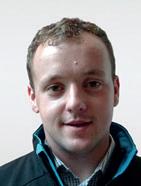


JAMES SIMPSON
General Manager - LIC Europe
T +44 (0) 7353 121171
E jsimpson@liceurope.com
d AI Services (NI)
T 028 9083 3123
F 028 9084 2640
E info@ai-services.co.uk
EOIN KENNEDY
Strategic Market Lead - Ireland
T 086 410 7786
E ekennedy@liceurope.com
KAREN DELANEY
Sales & Brand Specialist - South East
T 087 937 2553
E kdelaney@liceurope.com
WILLIAM WALSH
Breeding Advisor - Waterford & Cork
T 086 174 5666
E aiden@eurogene.ie
BARRY O’DONOVAN
Breeding Advisor - West Cork & Kerry
T 087 399 5967
E barry@eurogene.ie
LEONARD GAVIN
Breeding Advisor - Midlands North West
T 086 142 8830
E lgavin@eurogene.ie
PADRAIC HARNAN
Breeding Advisor - Midlands North East
T 086 191 6076
E padraic@eurogene.ie
PAT CORCORAN
Breeding Advisor - Tipperary & Limerick
T 086 206 2808
E pat@eurogene.ie
Carrigeen Commercial Park Cahir, Co Tipperary, Ireland
T 052 744 2517


ANGELA KENNEDY
Telesales
T 052 744 2517
E angelak@eurogene.ie
MAIREAD HAYES Telesales
T 052 744 2517
E mairead@eurogene.ie
744 2517